Text
Too bad Copenhagen ended up using the Stockholm chandelier which always looked s bit strange to me with its different build.






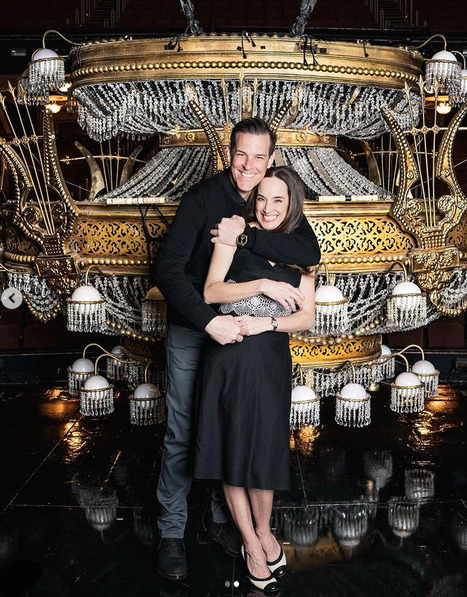


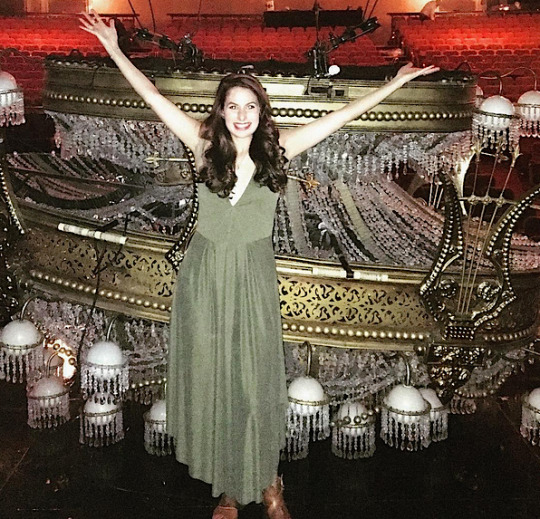
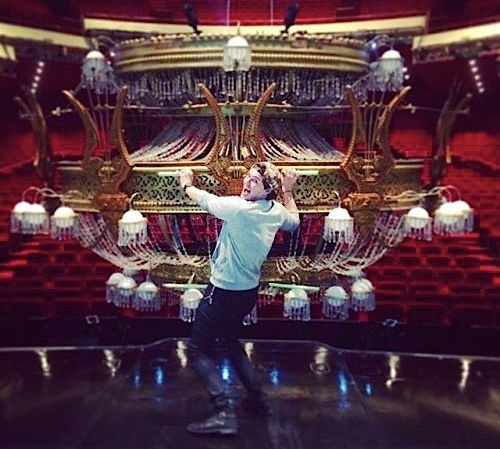
POTO members + chandelier + civil clothing
Maria Bjørnson, designer
Rita Saxmark, Copenhagen
Hanne Damm? Copenhagen
John Riddle, Broadway
Norm Lewis and Andrew Lloyd Webber, Broadway
Sara Sarres, Sao Paulo
Jeremy Stolle and Elizabeth Welch, Broadway
Dmitry Ermak Ivan Ozhogin, Moscow
Valerie Link, Hamburg
Rachel Zatcoff, Broadway
Jordan Pollard, West End
87 notes
·
View notes
Text


And as for Christine Daaé...
Yang Chenxiuyi and Liu Lingfei
88 notes
·
View notes
Text
I can’t remember if they cut the velvet header? Maybe it’s just nor flown in?
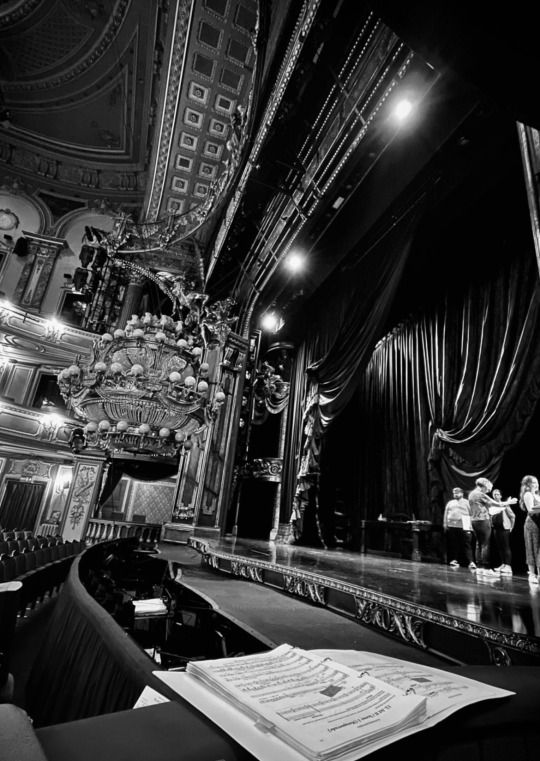
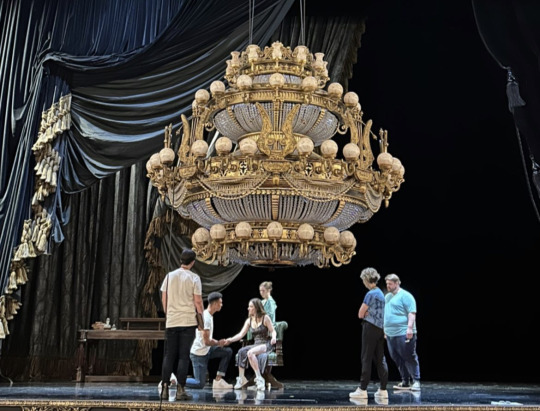
Rehearsals in London
x x
73 notes
·
View notes
Text


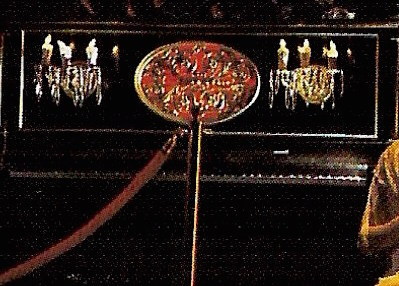

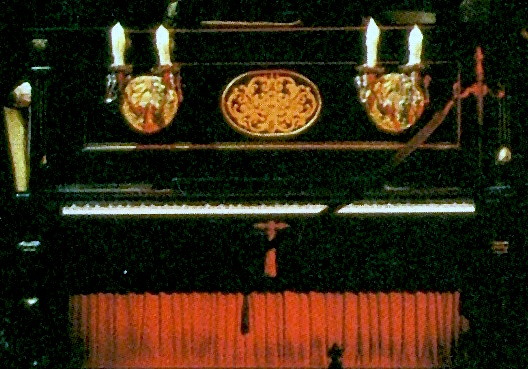



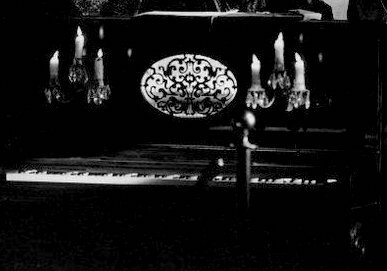

The "scary piano" in the Don Juan sitzprobe
Because did you ever notice the difference in number of candles, the light holders or in the metallic ornament? Sometimes a person just need to set nerd a bit...
South Africa 2012
World Tour 2013 (same as previous)
UK Tour 1993
Hamburg 2013
Stockhom 1989
Copenhagen 2018 (same as previous)
Yokohama 2017
Elder Japanese photo, undated (same as previous)
Broadway 1988
Broadway 2012 (same or very similar as previous)
(Original design by Maria Bjørnson)
79 notes
·
View notes
Note
Do you know how many black backdrops are used in replica productions? There's one with an arch cut out for the lair scenes (with some sort of mirror backdrop behind it?), one with a door for Notes I/II, and possibly one with decorations around the edges used for ToM/Masquarade/Wishing (unless it's the same as the Managers)?
The rear wall backdrop has the swoopy curtains on it and is as you correctly listed used for most large scenes (usually not Wishing). The managers mid wall is it’s own drop with no decorations and a door. Then there is an arch wall drop for the lair scenes. That was also used for the mausoleum/wishing in the original London production. Some productions have had a black mirror wall inside the arch. Depending on productions there is also a starcloth with a black gauze.
6 notes
·
View notes
Note
I thought the Westend production closed a few years ago. When did it start again? (Sorry I've been out of the Poto loop for quite some time and off of tumblr 😅)
The original West End production closed for good in March 2020. Covid was the only stopping it...
A revival was however launched in August 2021. This production feature half the size of the orchestra (from 27 to 14 or thereabout), it does no longer have the Golden Angel in the proscenium, the candelabras and travelator has been simplified, and there's some tweaks in both design, staging and lyrics. I consider it a revival due to these quite visible and audible changes, but others consider it the same. Up to your own interpretation. The producers shift between celebrating its 30-something history and calling it brand new, so they seem just as confused heh! The biggest visual changes is, apart from the candelabras and candles in the First Lair scene:
Circular chandelier without fringed bulbs, and a proscenium without the Golden Angel:

Pegasus sculpture in the Rooftop/Phantom's curse, replacing the Golden Angel curse:

Silvery Mirror Bride:

Also many wig and costume changes, but not something I think the general audience would ever notice.
32 notes
·
View notes
Note
They climb ladders up in the towers.
Would you happen to know how actors get on and off the Travelator? The recent BTS video of Raoul's drop into the "lake" got me wondering if they have to climb onto it or if there's a rollaway set of steps. Any knowledge or even photos of how this part of the show happens?
The original travelators could move up and down as well as back and forth. There were four entrances, curved "doorways", where the cast stood waiting, either to enter the bridge, or to sing. They stepped out on the bridge when it was their turn, so to speap. These "doorways" were USUALLY accessed by stairways/ladders. But I'm sure there is an exception somewhere...
Bless Germany for their amazing content, both an instructive drawing printed in the press:

...and a backstage photo from Corinne Schaefer:

They still partly do the travelator in the West End revival, but it does no longer move in all directions. As far as I know the original design is however used in South Korea and Japan? Not sure about China.
47 notes
·
View notes
Text
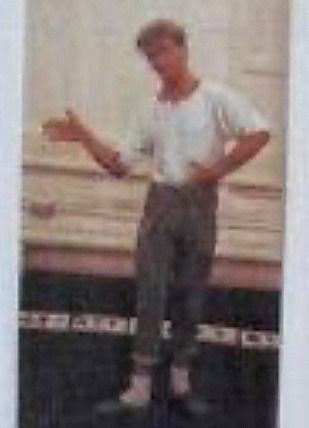




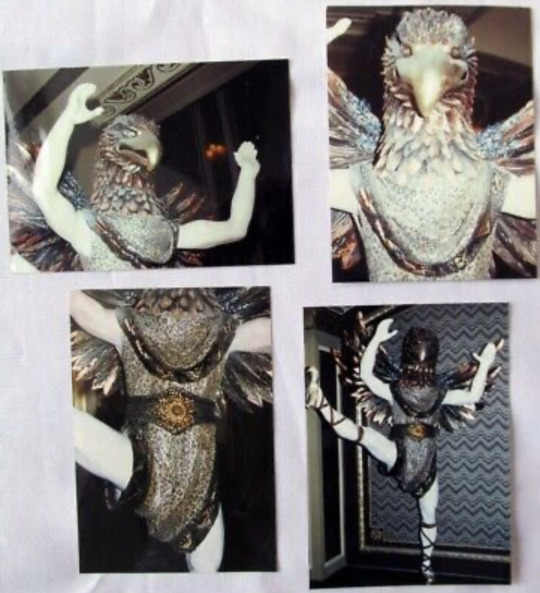

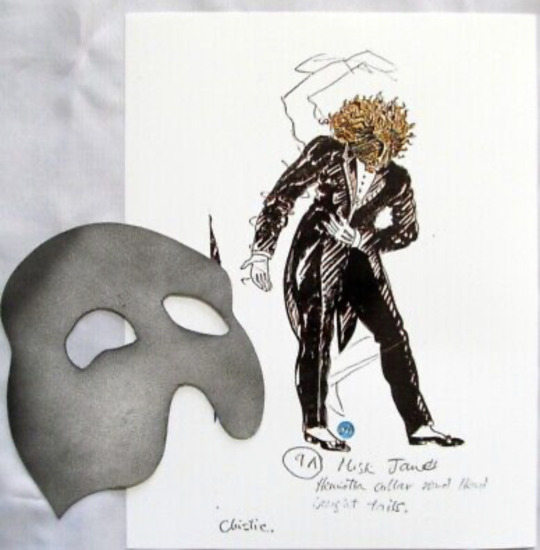
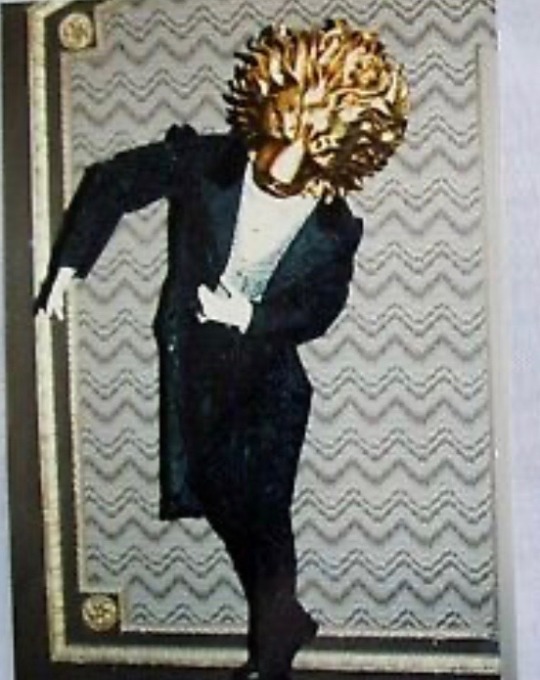
…and then I ask you…
WHO is the dancer posing for the Masquerade staircase dummies? And is he what Maria Bjørnson based her design on, or did he do later poses for the sculptors so they would get a more realistic human shape for the respective dummies? Curious mind needs to know!
( from this seller )
44 notes
·
View notes
Photo
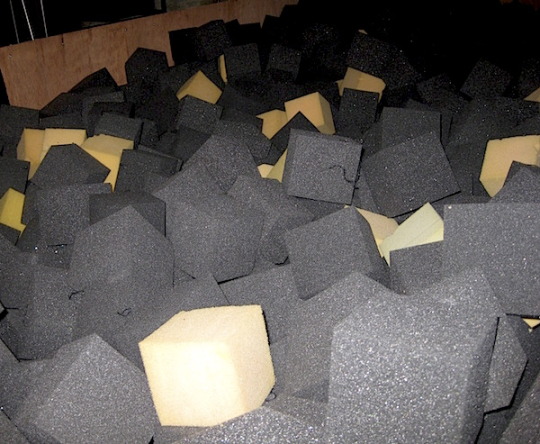
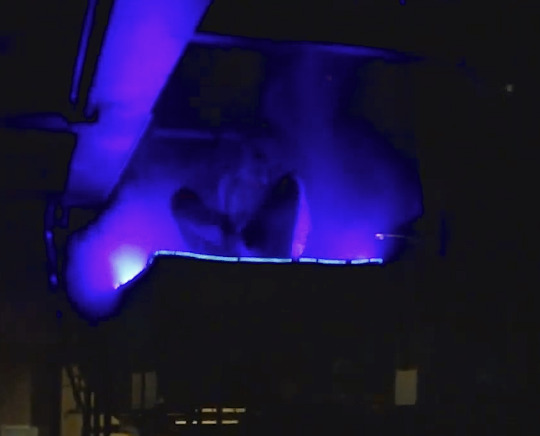


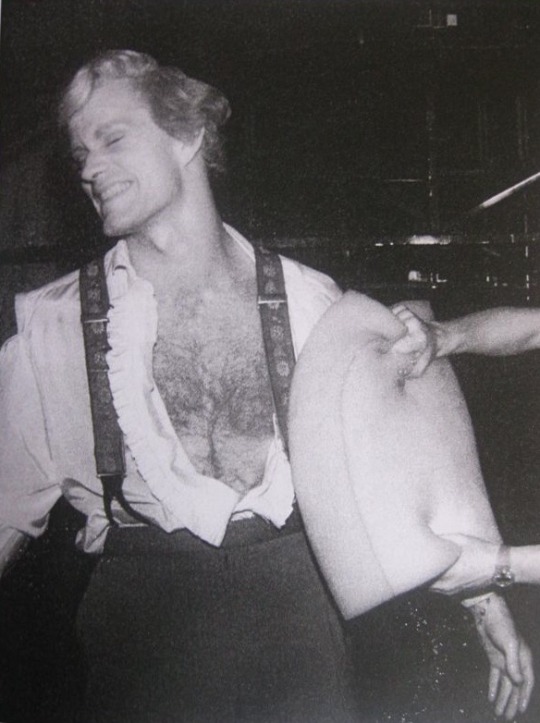
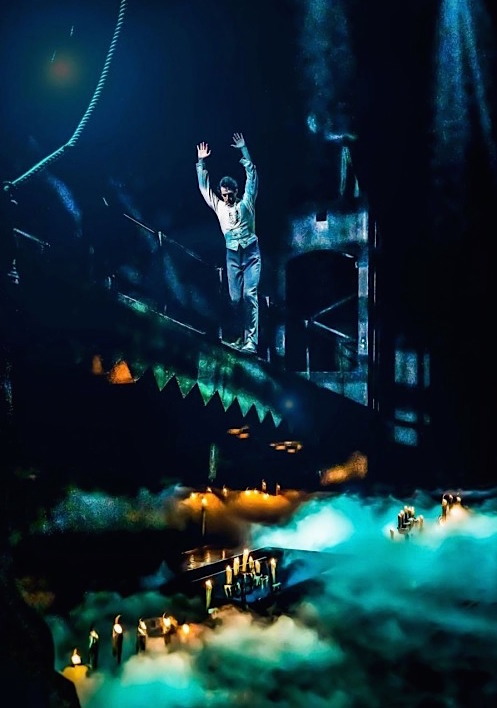



RAOUL’S LEAP AND “SPONGE-DOWN”
Sponge box Raoul jumps into, Copenhagen
Anton Zetterholm just landed after the jump, Stockholm
Anton Zetterholm being sponged down, Stockholm
John Riddle rehearsing the jump, Broadway
Steve Barton being sponged down, West End
The jump done on stage (John Riddle?), Broadway
Bengt Nordfors in the sponge box after the jump, Stockholm
Toby Joch rehearsing the jump, Oberhausen
Toby Joch in the sponge box after the jump, Oberhausen
BONUS:
Rehearsal video showing John Riddle on Broadway
The jump from under the stage, Anton Zetterholm in Stockholm
Tomas Ambt Kofod explaining the jump in Copenhagen
109 notes
·
View notes
Text

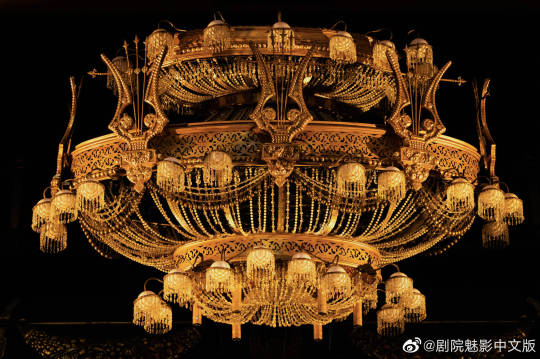
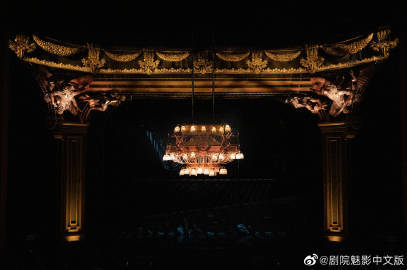

The chandelier rises at the Shanghai Grand Theatre ahead of the Chinese world premiere of the Phantom of the Opera.
367 notes
·
View notes
Text

Neue Flora Theater in Hamburg, 1990
( photo from Alamy )
101 notes
·
View notes
Note
I’m not very familiar with the Majestic but when Phantom moved in there was a massive renovation of the substage machinery and digging out a deeper cellar. So an educated guess would be that the flys were at least updated in some sort. What I do know is that since The Majestic is some +5metres shallower than Her Majesty’s some cuts were made to the flying scenery. The Rooftop profile comes up through the floor, lighting bars were cut or moved around. If innovative or not for the time I’m not sure but the set did push all boundaries sizewise of both theatres. I would say all existing bars were in use in both theatres. What surprised me when I saw plans of the flys was that set pieces that don’t take up the whole width of the stage almost always have a shortened lighting bar beside them. So every bit of the flytower is used. And regarding if original sets are still used my guess is that most large pieces are still original. I believe London got some bits and pieces from a UK tour at some point. Might be the case for Broadway as well. But maintenance and tender care goes a long way. The revamped London production still used some painted sets from 1986 in the fall of 2022. As per Lighting at the Majestic I think most is still rather old school. But the old lightcurtains seem to have been replaced for the reopening.
Droolingly hopeing @operafantomet shares that article.
How much do you know about the fly system in use at the Majestic? For example, how many fly lines are used? How innovative was Maria’s use of fly lines at the time? Have any of the flown in pieces been replaced? I feel like I remember the late 90s early 2000s, there was always a tear in the Hannibal backdrop almost and if one of the elephant tusks tore it.
I have an old technical magazine talking about various technical aspects, like the fly system, the light system, sound etc. But I think this only gives a tidbit of info and things have probably also been updated. I would rather message @miniatureoftheopera and see what they might think of the matter :)
14 notes
·
View notes
Text
Hey there! On one of Jason Forbach (Phantom Broadway)’s Instagram stories, I spotted this extra wall (?) that has a jagged edge in front of the travelator. Has this always been part of the set?
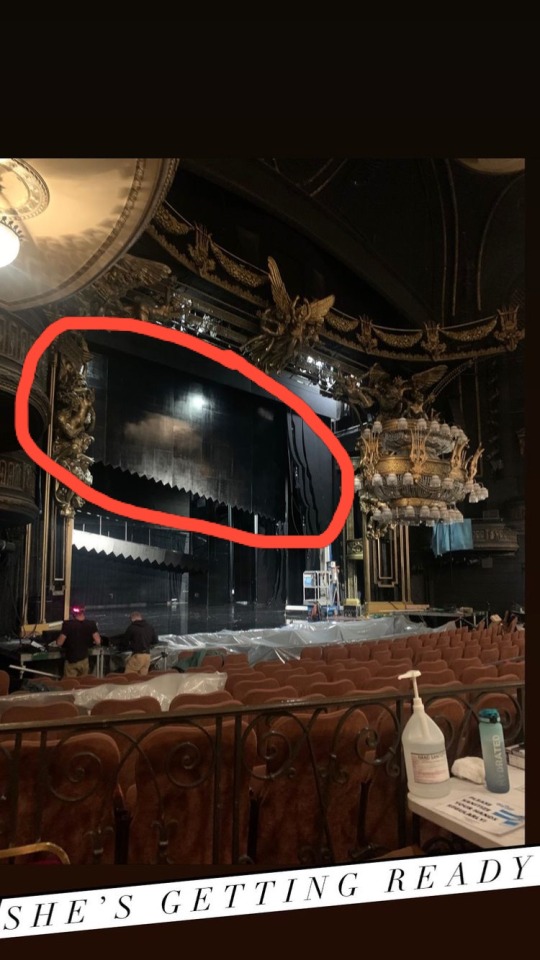
I can't believe this has slipped unnoticed. Stupid Tumblr app...
This is the serrated wall. It has always been part of the design. Usually it is a black velvet drop and not glossy. it is not very noticeable in the darkness behind the Dressing room drape.
So thank you for sharing the picture. So sorry for the delay of 75 years.
10 notes
·
View notes
Note
i hope i didnt miss it but how did you make the chandelier?
Hi, I might have done a photoset of this ages ago. Try the tag chandelier. Might need some scrolling. Some answers migh be in the modelmaking faq at the top of the page.
1 note
·
View note
Photo
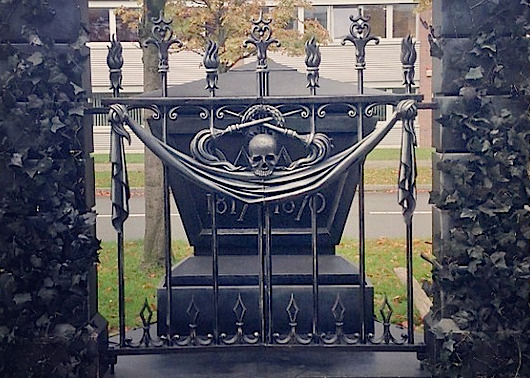
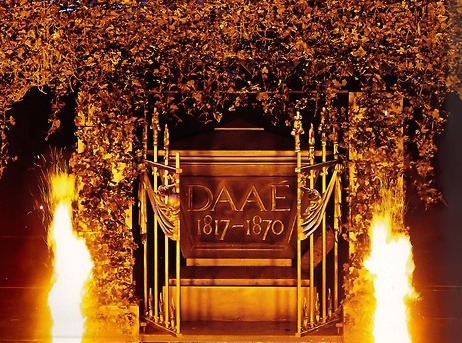








DADDY DAAÉ’S GRAVE (when did he actually live?)
1817-1870 (Oberhausen, Hamburg revival, Paris)
1821-1870 (Las Vegas, World Tour, Moscow)
1821-1872 (original/long-running West End, RAH)
1827-1870 (US Tour?)
1841-1870 (Japan, Vienna)
YOU WILL NEVER KNOW (Broadway, Stockholm, Copenhagen)
The list is not complete, but shows some main tendences. I have previously referred to “the timeline issue”. The years in the libretto didn’t quite line up from the beginning, and every later change, rewritten lyric, and alternate stagings has added to the confusion.
Most replica graves seems to agree that Daddy Daaé died in 1870, alternately in 1872. But his birth year varies quite a bit, from 1817 to 1821 to 1827 to 1841. I don’t know the reason for why the birthyear varies. And to add to that, they never even did any grave in original Stockholm and Copenhagen, and Broadway currently only writes “DAAÉ” without any years listed. What is interesting is that Maria Bjørnson, when asked in a Q&A at the official site many years ago, answered this:
Q: How were the dates on Daaé’s tombstone determined?
A: From the book (I.E. Leroux)
The general consensus is that POTO takes place c. 1881, due to various elements described in Gaston Leroux’s novel. Originally the year given in printed sources spanned from 1861 (original LP) to 1871 (Hamburg and Vienna) to 1881 (George Perry) - which in turn pushed the year of the auction scene from 1905 (original) to 1911 (most versions). For the 2004 movie the main story is set to c. 1870 and the auction to 1919. But then how does that add up with Love Never Dies taking place in 1907? And how does Daddy Daaé’s grave line up with Christine living from 1854-1917, according to the 2004 movie? No wonder current synopsises lot more vague about it, mentioning something about the late 19th century.
As I see it, the original plan was probably to place the story c. 1870 or a bit later. The costume design, especially the bustle dresses for the ladies, appears rather mid-1870s in style. Then there’s the alternate WYWSHA lyric mentioning “Three long years I’ve knelt in silence…”. If we combine that with the grave’s death year 1870 or 1872, it would place the story in 1873 or 1875. That said, the timeline has been pushed in all directions, and the specific WYWSHA verse seems to be the exception rather than the rule. They soon also landed on 1881 for the main year, which is fairly in sync with Leroux. In recent years the dresses has been “bustled up” for a rounder 1880s look as well.
In short, it seems whatever headcanon you may have is a good headcanon! But the above list shows variations in the gravestones, and after all I am here for the nerdy details…
99 notes
·
View notes
Photo

I was in the audience Friday the day they announced the closing, sad day for me as it would be my last time seeing the show in my favourite location. but this happened, just before the end, just before Raoul and Christine rowed off in the boat, there was a loud crash, the show went on as it only had a few minutes untill the end, but then the curtain call took forever to get going, and when the red curtain went up, this black curtain (which I never saw before) was there and everyone had to squeeze infront it to bow. It is a curtain used during intermission behind the red house curtain to stop the onstage lights from shining through that red curtain, which is a light gauze. I am not sure what happened, whatever it was, they would not let anyone back onstage out of caution.
20 notes
·
View notes
Photo


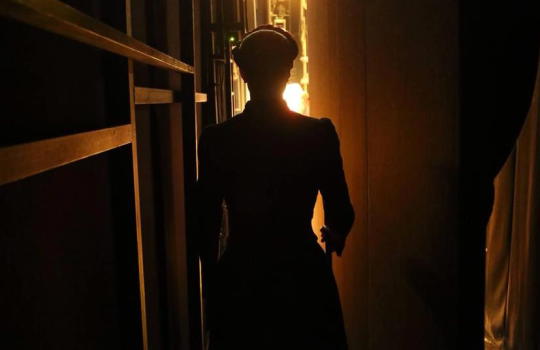





…in the wings…
Emilie Kouatchou, Broadway
Elizabeth Welch, Oberhausen
Michaela Christl, Hamburg revival
Unidentified, Tokyo
Lucy St Louis and Rhys Whitfield, West End revival
Rachel Anne Moore, Hamburg revival
Emmi Christensson, Stockholm revival
Mathias Edenborn and Corps de ballet, Hamburg revival
157 notes
·
View notes